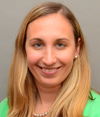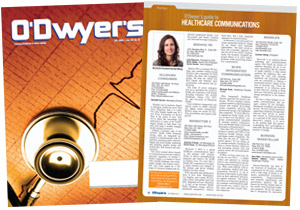|
|
We’re in the midst of a revolution in healthcare communications — an expansion beyond the two-channel paradigm of traditional and online media that has dominated the last decade — to one that encompasses a much broader spectrum of content distribution strategies. This sea change represents a huge opportunity for those of us in the healthcare public relations industry. For the first time, healthcare communicators have the opportunity to expand our scope beyond earned and “social-only-in-name” media, and embrace truly social media, paid strategies and owned content. Yet, these changes also present a new and unique set of challenges, as each channel requires its own customized content and distribution plan.
To help guide our clients and colleagues through this new reality, we have actually looked to the past. You might be familiar with the “Rule of Seven,” the old marketing adage stating that a consumer (or, in our case, a patient, physician, other healthcare stakeholder) needs to hear the same message seven times within a twelve-month period to truly absorb it. While the applications of the Rule of Seven have dramatically shifted, we believe the spirit of this theory has great relevance in the era of multi-channel marketing and can serve to guide us as communicators through an increasingly complex landscape.
|
|
After all, given the onslaught of information aimed at our audiences today, the idea that consumers today need repetition still makes perfect sense.
What has changed about the relevance of the Rule of Seven is the way message repetition is generated.
The latest data from the Meeker Internet Report — Kleiner Perkins Caufield & Byers (KPCB) Mary Meeker 2015 Internet Trends Report — indicates that consumers’ consumption of information via their mobile devices increased nearly tenfold over the last eight years, which should come as no surprise. Interestingly, this rise did not coincide with a decrease in desktop media consumption. So it’s not that the smartphone replaced the desktop for consuming media — it added to it. Data clearly show that it’s not an “either/or” but an “and” when it comes to consumption.
Further, stakeholder creation of content on various online channels has skyrocketed exponentially. Take a look at the latest data on social media content creation from 2013 to 2014 and you will see that the pace of content development is still increasing. Instagram saw a one-year increase of 76% in content creation on their platform. Even YouTube, one of the oldest mainstream social networks, is still enjoying incredible content growth, with nearly a 200% increase in new content created year over year. And it’s no surprise that many of the channels that are growing the fastest are the ones that feature highly visual, immediate content.
As we like to say at GCI Health, syndication — the idea that a media outlet can push out a single message across all of their channels and be effective — is dead. Media outlets have had to adapt their content distribution strategies to an increasingly cut-throat environment and more sophisticated audiences, who are no longer willing to accept information from a single source. Indeed, audiences today have an expectation that they can find relevant “on-demand content” on their channel of choice. If a patient sees something in an advertisement, they are going to ask a friend about it. If their doctor tells them something, they are likely to look it up online. If they see something on their social media channels, they might turn to a credible third-party organization to verify. And so on and so on.
Against this backdrop, public relations has evolved from a discussion of “traditional” and “online” media to a four-pronged paradigm consisting of earned, owned, shared and paid channels. As communicators in the healthcare space, we must embrace this new world and understand how best to leverage each channel to make sure our evolved stakeholders hear our message seven times in a cohesive but customized way.
Adding to our challenge is the fact that each of these channels is evolving every day and so our approach must also be adapted in real time.
The earned media landscape continues to become increasingly competitive for reporters, who are facing lay-offs, new careers as freelancers for multiple outlets, and an increasing expectation from their editors to make their content sharable across a number of different mediums. We must adapt to this new normal with a more customized and nimble approach — and work with internal reviewers to allow for this dynamism.
We’ve also seen a great evolution in the owned content being produced by healthcare companies. The industry is realizing that websites and other properties must be updated constantly to feed stakeholders’ 24-hour demand and is increasingly turning to their communicators to drive this content creation. This is being partly fueled by the increasing use of third-party influencers to create owned content on behalf of healthcare organizations, who realize that credible voices offer authenticity and the ability to contribute large amounts of fresh, engaging content.
Yet, by far, the most significant evolution in healthcare multi-channel marketing is the explosion in social media engagement from healthcare organizations in the last 18-24 months. This has been fueled by the precedence set by a select group of trailblazing pharmaceutical companies and the increasing understanding that industry itself is going to need to learn from each other — versus FDA — on what can and can’t be done from a social media perspective. It has also been helped by the growing use of paid promotion to drive engagement in response to the new business models introduced by Facebook and others that make organic reach increasingly difficult.
This addition of paid promotion to the mix — and communicators’ role in creating paid strategies — is allowing us to better target communications efforts and demonstrate reach in much more measurable ways.
In short, communications professionals have more options and opportunities than ever to reach their stakeholders seven times with impactful, targeted and — importantly — measurable multi-channel activity. It is an exciting time to work in this field!
* * *
Kristin Cahill is President of North America, GCI Health.




 Lo Isidro, senior director at Real Chemistry with more than a decade of strategic communications and PA experience, has joined Narrative Strategies.
Lo Isidro, senior director at Real Chemistry with more than a decade of strategic communications and PA experience, has joined Narrative Strategies. Nelson Fernandez, former North American chair of APCO Worldwide and managing director of Burson-Marsteller, has joined Volunteers in Medicine Berkshires as director of communications and PA.
Nelson Fernandez, former North American chair of APCO Worldwide and managing director of Burson-Marsteller, has joined Volunteers in Medicine Berkshires as director of communications and PA. Lilit Bargar, who was most recently an EVP in the healthcare practice at Weber Shandwick, comes on board at GCI Health as EVP, corporate practice lead.
Lilit Bargar, who was most recently an EVP in the healthcare practice at Weber Shandwick, comes on board at GCI Health as EVP, corporate practice lead.
 Five ways that successful thought leaders are made.
Five ways that successful thought leaders are made.


 Have a comment? Send it to
Have a comment? Send it to 
No comments have been submitted for this story yet.